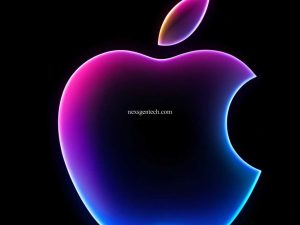Apple announced new accessibility features coming later this year, designed to enhance user experience across its devices. Among them is Eye Tracking, enabling users with physical disabilities to control their iPad or iPhone with their eyes. Music Haptics will introduce a novel way for deaf or hard-of-hearing users to experience music through the iPhone’s Taptic Engine. Vocal Shortcuts will allow users to perform tasks using custom sounds, and Vehicle Motion Cues aim to reduce motion sickness while using an iPhone or iPad in a moving vehicle. Additionally, visionOS will receive more accessibility upgrades. These innovations leverage Apple’s hardware and software, powered by Apple silicon, artificial intelligence, and machine learning, underscoring Apple’s longstanding commitment to inclusive product design.
“At Apple, we profoundly believe in the transformative power of innovation to enhance lives,” stated Tim Cook, Apple’s CEO. “For nearly 40 years, we have championed inclusive design by integrating accessibility at the heart of our hardware and software. We continuously push the boundaries of technology, and these new features embody our unwavering commitment to providing the best possible experience for all our users.”
“Every year, we push the boundaries of accessibility,” stated Sarah Herrlinger, Apple’s Senior Director of Global Accessibility Policy and Initiatives. “These new features will significantly impact a diverse range of users, offering innovative ways to communicate, control their devices, and navigate the world.”

Eye Tracking Arrives on iPad and iPhone
Powered by artificial intelligence, Eye Tracking offers users a seamless way to navigate their iPad and iPhone using just their eyes. Specifically designed for individuals with physical disabilities, this feature uses the front-facing camera for quick setup and calibration within seconds. With on-device machine learning, all data remains securely stored on the device and is never shared with Apple.
Eye Tracking is compatible with both iPadOS and iOS apps, and it requires no extra hardware or accessories. This feature allows users to navigate app elements and utilize Dwell Control to activate them, enabling access to functions like physical buttons, swipes, and other gestures, all through eye movement alone.
Apple Enhancing Song Accessibility through Music Haptics
Music Haptics introduces a revolutionary way for users who are deaf or hard of hearing to experience music on their iPhone. By enabling this accessibility feature, the Taptic Engine delivers taps, textures, and nuanced vibrations synchronized with the audio. This feature is compatible with millions of songs in the Apple Music catalog and will also be available as an API for developers, making music more accessible within their apps.
Expanded Range of Speech Capabilities
With Vocal Shortcuts, iPhone and iPad users can assign custom phrases that Siri understands to launch shortcuts and perform complex tasks. The new feature, Listen for Atypical Speech, enhances speech recognition for a broader range of speech patterns using on-device machine learning. This feature is designed for individuals with acquired or progressive speech conditions, such as cerebral palsy, amyotrophic lateral sclerosis (ALS), or stroke. These innovations offer a new level of customization and control, building on the features introduced in iOS 17 for users who are nonspeaking or at risk of losing their ability to speak.
“Artificial intelligence holds the potential to enhance speech recognition for millions with atypical speech. We are delighted that Apple is introducing new accessibility features,” said Mark Hasegawa-Johnson, Principal Investigator of the Speech Accessibility Project at the Beckman Institute for Advanced Science and Technology, University of Illinois Urbana-Champaign. “The Speech Accessibility Project was established as a broad-based, community-driven initiative to assist companies and universities in making speech recognition more robust and effective. Apple stands out as one of the key accessibility advocates who have made this project possible.”
Using Vehicle Motion Cues to Alleviate Motion Sickness
Vehicle Motion Cues is a groundbreaking feature for iPhone and iPad designed to alleviate motion sickness for passengers. Research indicates that motion sickness often results from a sensory conflict between what a person sees and feels, hindering comfortable use of these devices in moving vehicles. Vehicle Motion Cues addresses this by displaying animated dots along the screen edges, reflecting vehicle movements to reduce sensory conflict without disrupting the main content. Leveraging the built-in sensors, it detects when a user is in motion and adjusts accordingly. This feature can automatically activate or be manually controlled via the Control Center, enhancing user comfort during travel.
CarPlay Introduces Voice Control and Enhanced Accessibility Features
Upcoming accessibility features in CarPlay include Voice Control, Color Filters, and Sound Recognition. Voice Control allows users to navigate CarPlay and operate apps solely with their voice. Sound Recognition provides alerts for car horns and sirens, aiding drivers or passengers who are deaf or hard of hearing. For colorblind users, Color Filters enhance the CarPlay interface’s visual usability, supplemented by additional visual accessibility options such as Bold Text.
Upcoming Accessibility Features in visionOS
This year, visionOS will introduce several new accessibility features, including systemwide Live Captions. These captions will assist everyone, especially users who are deaf or hard of hearing, by providing real-time transcription of spoken dialogue in live conversations and app audio. With FaceTime in visionOS, Live Captions will enable more users to easily enjoy connecting and collaborating through their Persona. Additionally, Apple Vision Pro will allow users to reposition captions using the window bar during Apple Immersive Video and will support more Made for iPhone hearing devices and cochlear implants. Enhancements for vision accessibility will also include options like Reduce Transparency, Smart Invert, and Dim Flashing Lights, benefiting users with low vision or those who prefer to minimize exposure to bright and frequent flashing lights.

These features join the extensive array of accessibility options already available in Apple Vision Pro, which boasts a flexible input system and an intuitive interface designed for a diverse user base. Tools like VoiceOver, Zoom, and Color Filters enable users who are blind or have low vision to access spatial computing. Meanwhile, features such as Guided Access support individuals with cognitive disabilities. Vision Pro can be controlled using any combination of eyes, hands, or voice, with accessibility features like Switch Control, Sound Actions, and Dwell Control also aiding those with physical disabilities.
“Apple Vision Pro is undoubtedly the most accessible technology I’ve ever encountered,” stated Ryan Hudson-Peralta, a Detroit-based product designer, accessibility consultant, and cofounder of Equal Accessibility LLC. “Born without hands and unable to walk, I’ve always known the world wasn’t designed with me in mind. Therefore, it’s extraordinary to experience how seamlessly visionOS operates. This reflects the profound significance of accessible and inclusive design.”
Final Words
In conclusion, Apple Vision Pro represents a groundbreaking advancement in making technology accessible and inclusive for all users, regardless of their physical or cognitive abilities. By integrating a wide range of customizable accessibility features, Apple ensures that everyone can enjoy and benefit from immersive spatial computing. This dedication to inclusivity not only enhances the user experience but also sets a new standard for technological innovation. As Ryan Hudson-Peralta’s experience highlights, accessible design has the power to transform lives, making the world a more inclusive place for everyone.




